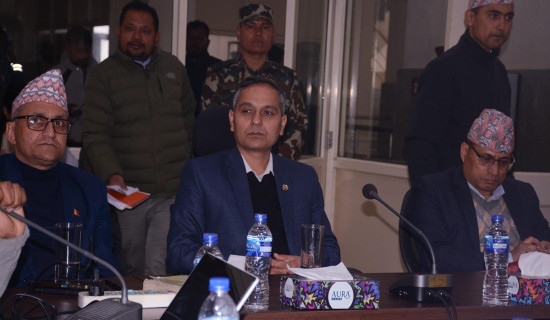- Wednesday, 31 December 2025
Battle Against HIV/AIDS
The world observes World AIDS day every year on December 1 to show support for people affected by HIV/ AIDS, to spread awareness and to remember those who succumbed to this disease. World AIDS day is a moment to commemorate the progress made in the fight against HIV/AIDS. The progress in medical research, increased awareness and better access to treatment has transformed the task of HIV/ AIDS management. The day serves as an opportunity to promote education about HIV/AIDS, to reduce social stigma and discrimination associated with it, and to encourage preventive measures. It also provides a platform to advocate for access to treatment and care for those affected by HIV/AIDS.
“Let Communities Lead’ is the theme of this year’s World AIDS day, and it emphasises the important role that communities play in combating this scourge. People living with HIV, advocates, healthcare professionals, and support networks, are at the forefront of efforts to raise awareness, provide support, and reduce stigma associated with the virus. As per a news story published in this daily, 5,087 new individuals were estimated to have been infected by HIV in Nepal in 2000, the estimate declined to 488 in 2022, a decrement of 90 per cent. We must say that Nepal has made tangible progress in prevention and management of HIV/AIDS. The government of Nepal is providing antiretroviral treatment for free from designated health centres.
Minister for Health and Population Mohan Bahadur Basnet, in his message on the occasion of the World AIDS day, said that the government was committed to achieving 95-95-95 targets. As per the global target, 95 per cent of people with HIV should be aware of their HIV status through testing and diagnosis, 95 per cent of those should be taking life-saving antiretroviral treatment (ART) and 95 per cent of those on medication should achieve a suppressed viral load for the benefit of the persons’ health and for reducing onward HIV transmission. These targets aim to improve the diagnosis, treatment, and viral suppression rates among people living with HIV.
As per the data ranging from 2010 to 2022, the rate of new cases of HIV declined by 77 per cent and death from virus by 80 per cent. Although we have made phenomenal progress in combating HIV/AIDS, people living with HIV/AIDS still face discrimination and humiliation because of the stigma attached to the disease. It is often difficult to admit HIV infected children to school, revealing their HIV status because of social stigma attached with the virus. People are hesitant to seek treatment for a long time, and often discontinue their medication as they don’t want to disclose their status with the fear of being shunned by the society. There still are instances of HIV-infected people being fired from jobs, citing different reasons.
Raising awareness about the disease is still very important to give knowledge about transmission and preventive measures and to reduce stigma and discrimination to challenge myths and misconception attached to the disease and promote acceptance to create more compassionate society where people with HIV/ AIDS can live without discrimination and judgement. People need to be made aware that the disease does not pass through hugging, kissing or sharing the toilet. It also does not transmit through breathing or mosquito bite involving an infected person. However, the virus can spread through infected blood, semen or breastfeeding. Important strides have been made in its treatment and retroviral medications are able to provide a cure.

















